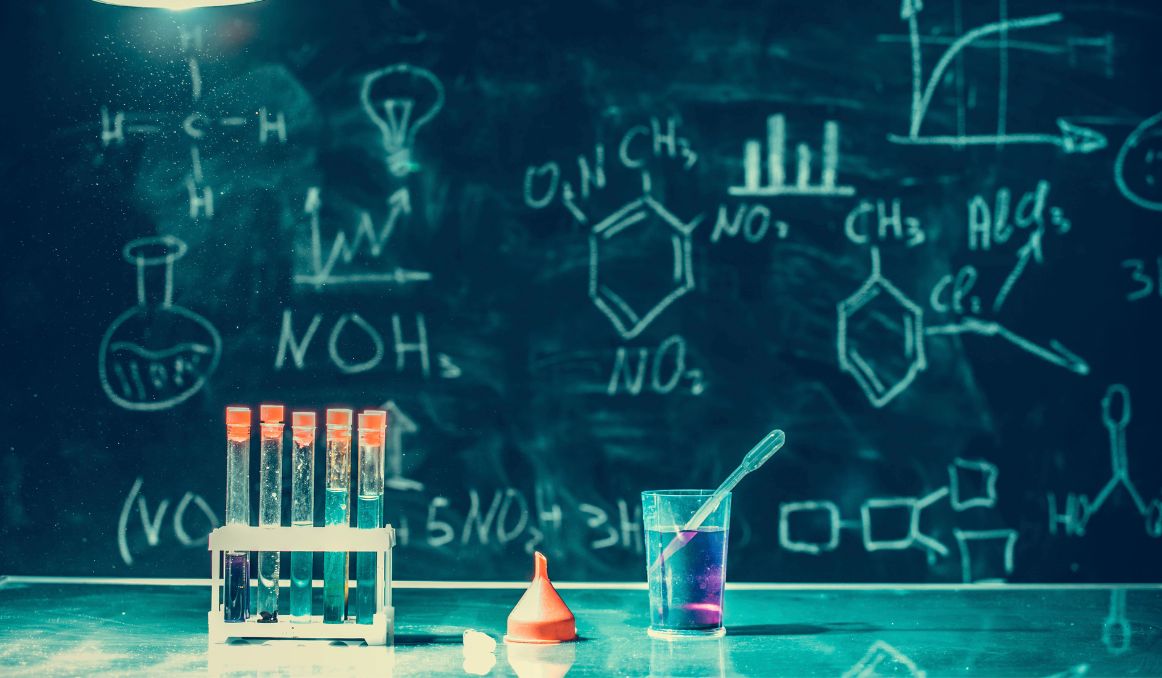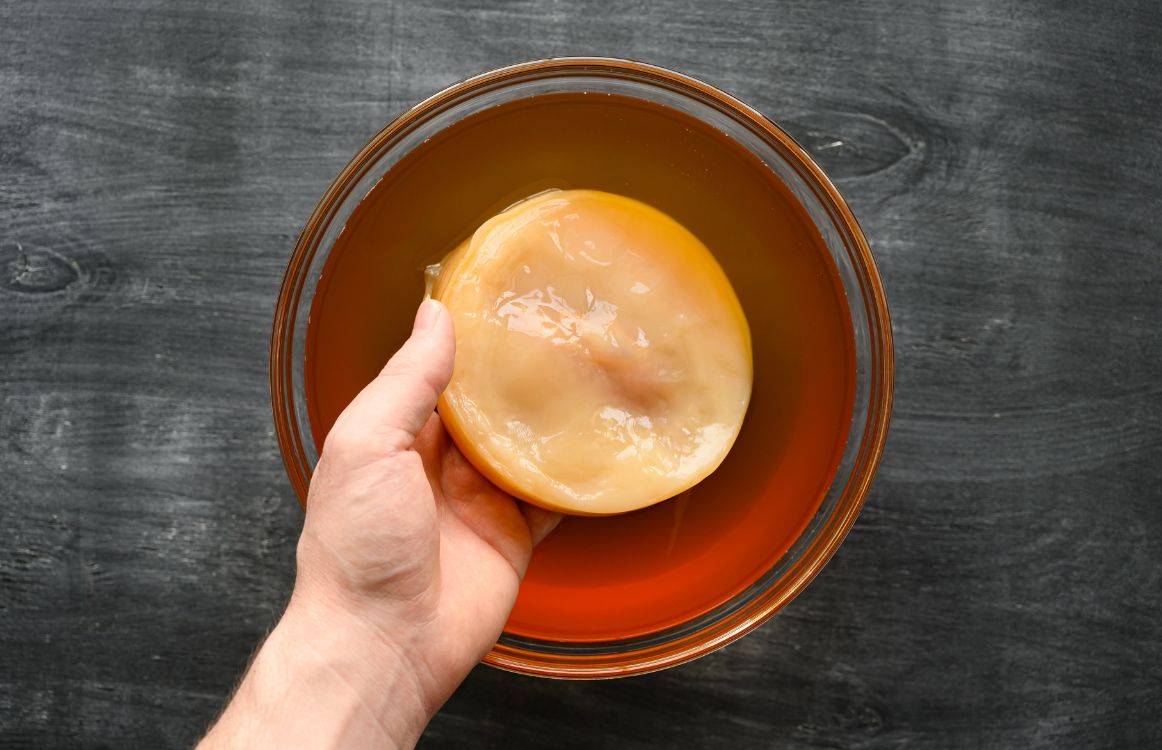What Is the Chemical Equation for Yeast Fermentation?
When considering the myriad applications for yeast, it can be helpful to understand what exactly is taking place behind the scenes. In other words, a little science lesson will lead us to answer the question, “what is the chemical equation for yeast fermentation?”
A Brief History of Yeast

Yeast is one of the oldest living organisms on earth.
It is a member of the fungus family, which is the actual oldest life form on this planet, and while we have many interesting plants on the globe that serve many incredible functions, particularly in the human body, yeast is one organism that is fascinating to us because we can actually see what it is doing outside of our bodies.
We can study fermentation with our very own eyes on any given day of the week.
You see, yeast is a eukaryotic, single celled organism, which means it is fully contained; it is also fully autonomous.
It can reproduce sexually, but it does not have to, and in fact it more commonly reproduces asexually, and quite rapidly at that.
Given its preferred environment – oxygen rich, warm, and moist – and its favorite food – sugar – yeast can create its own daughter cell, which will form on the outside of the yeast cell and grow, feeding off of the mother cell until it reaches roughly 50% of the mother cell’s volume, at which point it will break off and begin its own hunt for sugar and begin reproducing.
A mother cell can reproduce in this way, given the ideal circumstances, hundreds of times.
And her many daughters will go on to do the same.
It is the reason yeast is one of the most prevalent living organisms we know of, and it is quite large for such a simple life form, taking up even more space than bacteria, which outnumbers yeast by a factor of 30.
In the absence of oxygen and the presence of sugar, yeast will ferment.
We humans discovered this seemingly magical process very early on in our ancestry, as yeast will spontaneously ferment in nature with no interference or intervention from humans at all.
A piece of fruit will grow ripe and fall from the tree or vine and yeast will get right to work fermenting and creating alcohol and carbon dioxide right there on the floor of the jungle.
It is no wonder we quickly discovered wine, beer, and so many other ways to ferment.
Once French scientist Louis Pasteur entered the scene and placed yeast under a microscope to study the fermentation process, we got a chemical equation to accompany our natural process.
The Chemical Equation of Yeast Fermentation
In most cases today, fermentation takes place without oxygen as in general lovers of fermented foods and beverages prefer this process.
It seems that in the presence of oxygen, off flavors and aromas are produced.
Furthermore, yeast spends more time reproducing than fermenting when it has access to oxygen.
Without oxygen, it will focus more on the fermentation process.
The anaerobic fermentation of glucose (C6H12O6) to form ethanol (C2H5OH) and carbon dioxide is written as:
C6H12O6 (aq) ————> 2C2H5OH (aq) + 2CO2(g) + 2ATP
You see the ATP at the end of the equation is the energy used to complete fermentation.
In words, we say glucose produces ethanol and carbon dioxide.
The chemical reaction of yeast takes one molecule of glucose and transforms it into two molecules of ethanol and two molecules of carbon dioxide.
Also read: How Much ATP is Produced During Fermentation?
Applications of Yeast for Fermentation

Thanks to this marvelous piece of chemistry that functions largely on its own, humans have been able to use yeast to ferment various foods, beverages, and even fuels, including but not limited to:
Wine
Wine was the first product created by fermentation as far as we know, which includes ciders and sake, a fruit wine or a rice wine, respectively.
It makes sense these were first as we discussed how simple the fermentation process of fruit is, and in these cases really the producer needed only to make a juice and leave it out.
The exception is the case of sake, which is rice wine, but the process is similar as it demands the production of a sort of rice water made from steam and then fermentation follows.
Interestingly enough, the carbon dioxide produced during fermentation plays a significant role in the winemaking process. It contributes to the formation of bubbles in sparkling wines and helps with the extraction of color and flavor compounds from the grape skins.
Bread and Beer
Bread and beer likely went hand in hand as both required the production of grains, and cereal grains in particular.
Once the grains are roasted, the starches are converted to sugars, which then attract the yeast for fermentation, whether the sugars lie in a bread dough or in a wort.
In bread, the carbon dioxide produced during the fermentation process is responsible for the leavening action, causing the bread to rise and become fluffy. The heat from baking evaporates the alcohol almost entirely, leaving behind just the distinctive flavor and texture of bread.
In beer, on the other hand, the carbon dioxide is responsible for the effervescence in beer, while the ethanol contributes to the alcoholic content, of course, but also to its flavor.
Kombucha
Kombucha came along a bit later, around 200 BC, because it is comprised of tea, which then requires the addition of fruit and sugar in order to attract the yeast for fermentation.
The fermentation process of kombucha is complex, as it involves a combination of bacteria and yeast (typically Saccharomyces cerevisiae and Brettanomyces, or wild yeast) interacting with the sugars in the tea. These sugars are converted into various organic acid, such as acetic acid and lactic acid, but also, of course, ethanol and carbon dioxide.
It’s important to note that these organic acids produced during the fermentation process of kombucha and which give it its unique taste and health benefits can vary greatly depending on the strains of bacteria and yest that are used, but also on other factors such as the temperature and fermentation time. The carbon dioxide produced during the fermentation process contributes, in this case, to the natural carbonation of kombucha.

Yogurt and Sauerkraut
Yogurt, Sauerkraut, and other fermented foods take much more practice and precision, demanding the addition of bacteria for the production of the lactic acid that creates the souring effect and all the good probiotics that are so good for human consumption. So both yogurt and sauerkraut are fermented using bacteria, not yeast, which makes for an entirely different fermentation process.
BioEthanol
Finally, the production of bioethanol, an alternative fuel source typically derived from corn sugar and also obtained through yeast fermentation, came along much later of course as humans began the hunt for renewable energy in the wake of the fossil fuel debate.
Corn is easy to grow and makes up for the carbon dioxide it produces when it burns by absorbing it while it grows.
A win/win for the climate change crowd.
In the end, even after thousands of years coexisting with yeast, we are barely scratching the surface of how many wonderful ways it can contribute to the health, wellness, happiness, and progress of humankind.
It will be interesting to see what this simple chemical equation does for us next.
Cheers!
Are you still pitching fresh yeast every time? By reusing your yeast, you can save up to hundreds of thousands of dollars per year on just yeast alone!
Join the hundreds of brewers and vintners from all around the world using the Smartest Automated Yeast Cell Counter! Request a Free Demo Account today and experience firsthand how Oculyze can take your brewery or winery to the next level!
Sources:
- https://byjus.com/question-answer/write-the-chemical-equation-of-anaerobic-respiration-in-yeast/
- https://www.sydney.edu.au/science/chemistry/~george/1405/Wk2Ans.pdf
- https://www.nagwa.com/en/videos/659180404237/
Stay on top on important fermentation insights – subscribe to our monthly newsletter and receive a hand-picked selection of our most relevant articles straight to your inbox.
Never miss a beat and get real time updates with a new article each workday by subscribing our social media channels.
Instagram | Facebook | Twitter | YouTube


